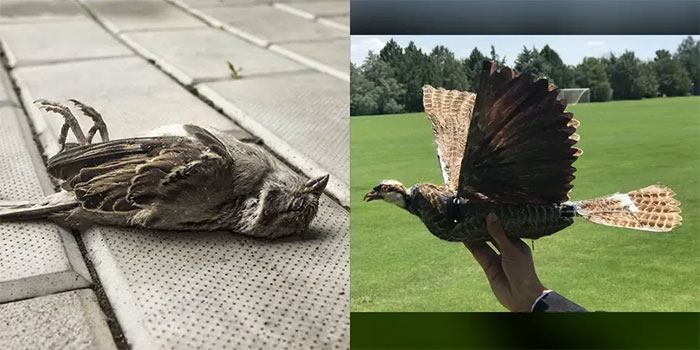Scientists plan to turn dead birds into drones
American scientists are hatching a plan to turn dead birds into drones, used for patrol and surveillance purposes.
The field of science is always full of interesting surprises. Every day, new things are discovered and useful research is published.
Most recently, at the American Institute of Aeronautics and Astronautics' 2023 Science and Technology Forum , researchers made headlines when they demonstrated how to turn dead birds into drones that look and behave exactly like live birds.
With the above characteristics, these aircraft are classified as Ornithopters - unmanned aircraft that can flap their wings . The birth of these 'bird aircraft' is considered a premise for the construction of spy aircraft that rely less on artificial materials. Besides, the use of dead birds also brings many advantages to aircraft, because their bodies are inherently designed for flying.

Using dead birds also offers many advantages to aircraft, since their bodies are designed for flight.
Looking further, this new device could be used in the military field, helping the army to track enemies in a more sophisticated way because it is very difficult to distinguish birds with attached aircraft engines from real birds.
However, this research is not without its shortcomings. For example, the engine noise is still quite loud, and the tests also proved that these drones are not the most efficient means of flight from an aerodynamic point of view.
Responding to the issue, the team said they looked at real-life flight behavior of birds and identified a number of factors that could help make the device fly more efficiently.
For example, they found that when the avian drones flew in a V-formation like migratory birds, the devices could reduce energy consumption by up to 70%.
Additionally, replacing some of the gears in these aircraft could help reduce noise and extend the life of the equipment, according to the research team.
"These drones can help save lives, save money and protect the environment," said Dr. Mostafa Hassanalian, a mechanical engineering major who led the research. His team has spent the past two years developing drones that simulate birds such as pheasants, mallards and pigeons. The drones are currently in testing and the team is seeking permission to fly them outdoors with real birds.
In addition to helping avoid collisions between birds and aircraft, these devices can also be used to study bird flocks, their colors and communication patterns, as well as other natural ecosystems, according to USA Today.
- The cause of thousands of unusually dead birds along Alaska's beaches
- The birds screaming in England died massively because of
- Massive sea birds die in Peru
- 1,300 mysterious dead birds in Chile
- 'Rain of dead birds' mysterious in America
- Why must use a special gun to shoot down the drone?
- Thousands of bird corpses cover a 200km2 wide lake
- The phenomenon of mysterious dead birds in China
- Dead birds died of drunkenness
- NASA wants to turn the Sun into a love glass to search for aliens
- Danger lurks inside the mountains where birds sing and insects chirp
- Middle East uses Red Sea to save the Dead Sea
 The US company is about to build a supersonic passenger plane of 6,000km / h
The US company is about to build a supersonic passenger plane of 6,000km / h Japan develops avatar robot as in fiction film
Japan develops avatar robot as in fiction film Australia tested the world's first mango picking robot
Australia tested the world's first mango picking robot America develops technology to separate water from animal waste
America develops technology to separate water from animal waste